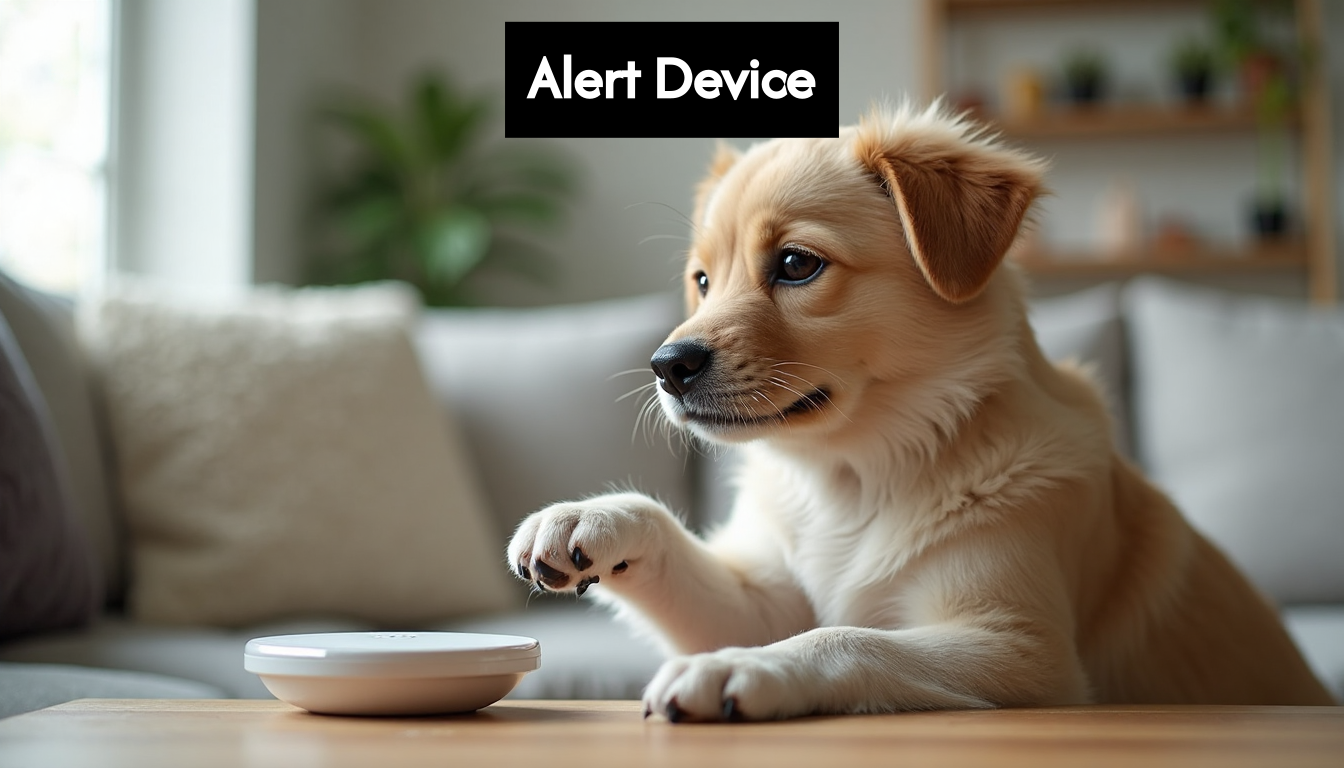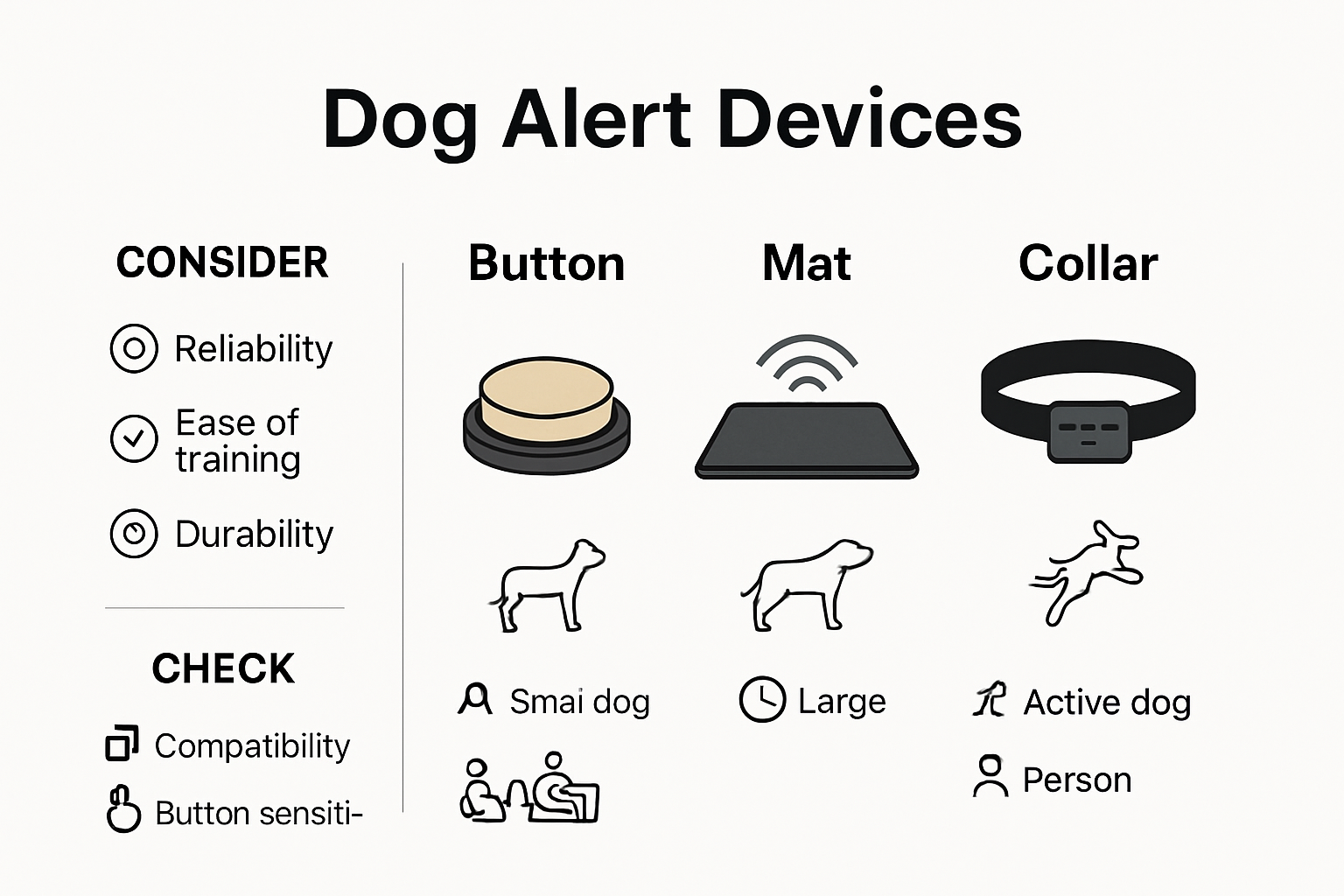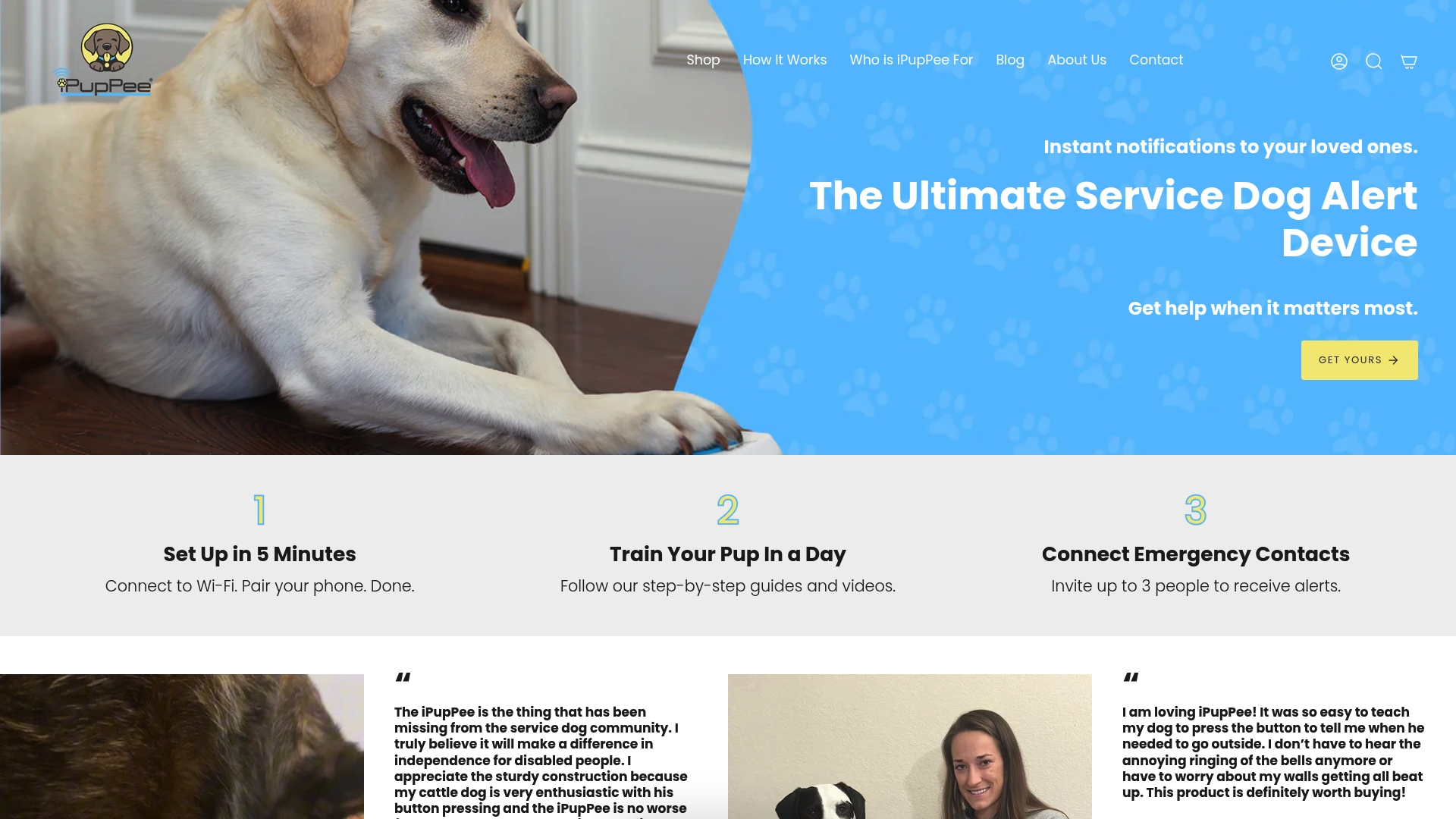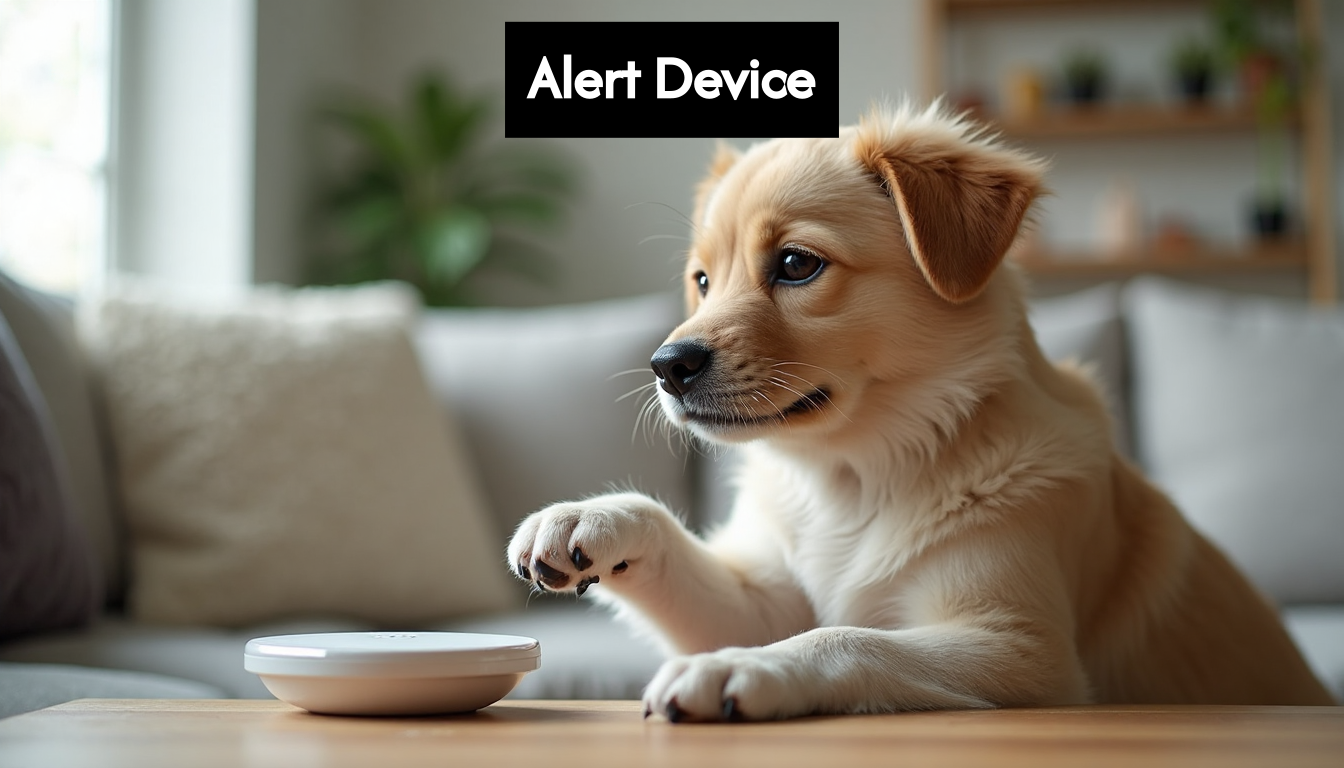
Training your dog to use an alert device is easier than you might think. Most pet owners are surprised to learn that over 80 percent of dogs can master basic alert device functions with consistent, short sessions. Here’s the unexpected part: the true challenge is not about fancy technology or expensive gadgets. It comes down to matching the device to your dog’s unique personality and learning style. This twist is why even older or less tech-savvy dogs can shine when you use the right approach. Want to know why your dog might actually find training fun and rewarding? Read on.
Table of Contents
- Choosing The Right Dog Alert Device For Your Needs
- Step-By-Step Dog Alert Device Training Methods
- Common Challenges And How To Overcome Them
- Maintaining And Advancing Alert Skills Over Time
Quick Summary
| Takeaway | Explanation |
|---|---|
| Choose the Right Device | Assess your specific communication needs and your dog’s capabilities to select a reliable, durable, and compatible alert device. |
| Gradual Training Approach | Start with basic obedience before introducing the alert device, using progressive training techniques to build your dog’s comfort and understanding. |
| Overcome Common Challenges | Address motivation, technical, and psychological barriers through varied rewards, customized training, and creating positive associations with the device. |
| Regular Skill Maintenance | Continuously assess your dog’s alert skills and introduce progressive challenges to keep their communication abilities sharp and engaging. |
| Sustain Engagement | Maintain your dog’s motivation by rotating training techniques and rewards, ensuring that learning remains dynamic and enjoyable. |
Choosing the Right Dog Alert Device for Your Needs
Selecting the perfect dog alert device requires careful consideration of your specific needs, your dog’s capabilities, and the unique communication challenges you face. Not all alert devices are created equal, and finding the right match can dramatically improve safety, independence, and communication between you and your canine companion.
Understanding Your Communication Needs
Before investing in a dog alert device, assess your specific requirements. Are you a service dog handler with mobility limitations? A senior living alone who needs additional safety support? A pet owner seeking improved communication with a hearing or visually impaired dog? Each scenario demands a different approach to alert device training.
Key factors to evaluate include:
- Reliability: The device must work consistently under various conditions
- Ease of Training: Your dog should be able to learn the alert mechanism quickly
- Durability: The device needs to withstand daily use and potential rough handling
- Compatibility: It should integrate seamlessly with your lifestyle and living environment
Technical Considerations for Alert Device Selection
Modern dog alert devices offer sophisticated communication options. Learn more about our medical alert device training system to understand the technological capabilities available. When choosing a device, consider:
- Button Sensitivity: Can your dog easily activate the device with minimal physical effort?
- Sound and Visual Indicators: Does the device provide multiple alert methods?
- Battery Life and Charging: Will the device remain operational throughout your dog’s working hours?
- Size and Weight: Is the device comfortable for your dog to wear or interact with?
Training complexity varies based on the device’s design. Some alert systems require extensive conditioning, while others are more intuitive. Professional dog trainers recommend starting with devices that have simple, clear communication mechanisms.
Matching Device to Dog Capabilities
Every dog has unique learning capabilities and physical strengths. A device that works perfectly for a large service dog might be challenging for a smaller breed. Consider your dog’s:
- Age and physical condition
- Previous training experience
- Motivation and reward responsiveness
- Existing communication skills
Professional dog safety experts recommend starting with positive reinforcement techniques and gradually introducing the alert device during controlled training sessions. Patience and consistent practice are crucial for successful device integration.
Budget is another critical factor. While advanced alert devices offer comprehensive features, not every solution requires significant financial investment. Research thoroughly, read user reviews, and if possible, test devices before making a final decision.
Remember, the right dog alert device is more than a technological tool. It’s a bridge of communication, a safety mechanism, and a testament to the incredible bond between humans and their canine companions. Choose wisely, train consistently, and you’ll unlock a new level of understanding and support.

Step-by-Step Dog Alert Device Training Methods
Training a dog to use an alert device requires patience, consistency, and a strategic approach. Successful communication technology integration depends on understanding your dog’s learning style and creating a positive, reward-driven training environment.
Foundation Building: Preparing Your Dog for Alert Device Training
Before introducing the alert device, establish a strong baseline of basic obedience and communication. Learn essential skills for teaching dog commands that will support your alert device training. Dogs must first understand fundamental concepts like:
- Attention: Recognizing and responding to your focus
- Targeting: Touching specific objects or areas on command
- Motivation: Understanding reward-based learning techniques
Professional trainers emphasize creating a trust-based relationship where your dog feels comfortable exploring new communication tools. Start with short, engaging training sessions that keep your dog mentally stimulated and enthusiastic about learning.

Progressive Alert Device Training Techniques
Training methods vary depending on the specific alert device, but most follow a similar progression. Explore our comprehensive guide to button training for additional insights into communication device strategies.
Training stages typically include:
-
Introduction Phase: Familiarize your dog with the device
- Allow exploration without pressure
- Use high-value treats to create positive associations
- Keep initial interactions short and fun
-
Targeting Training: Teaching deliberate device activation
- Guide your dog’s paw or nose to the button
- Reward immediate contact
- Gradually increase complexity of activation requirements
-
Contextual Communication: Connecting button press to specific needs
- Associate button with clear outcomes (treat, door opening, attention)
- Practice in controlled environments
- Slowly introduce more complex communication scenarios
Advanced Alert Device Training Strategies
Advanced training requires nuanced understanding of canine learning psychology. Recognize that each dog learns differently. Some may quickly grasp button communication, while others need extended guidance.
Key advanced techniques include:
- Using variable reward schedules
- Implementing gradual complexity increases
- Practicing in diverse environmental conditions
- Monitoring and adjusting training pace based on individual dog response
Consistent practice transforms the alert device from a novel object to a reliable communication tool. Professional service dog training experts recommend maintaining a patient, positive approach throughout the learning process.
Remember that dog alert device training is not about perfection but about building a communication bridge. Celebrate small victories, remain flexible in your approach, and enjoy the remarkable journey of enhancing communication with your canine companion.
Common Challenges and How to Overcome Them
Dog alert device training is not without its hurdles. Even the most dedicated pet owners and handlers encounter obstacles that can frustrate both human and canine participants. Understanding these challenges and developing strategic solutions is crucial for successful communication device implementation.
Motivation and Engagement Barriers
One of the most significant challenges in dog alert device training is maintaining your dog’s interest and motivation. Dogs have unique learning styles and attention spans that can vary dramatically. Check out our guide on keeping dogs motivated during training to address this common issue.
Common motivation challenges include:
- Inconsistent Reward Response: Dogs may lose interest if rewards become predictable
- Training Fatigue: Extended sessions can lead to decreased engagement
- Individual Learning Differences: Some dogs learn faster than others
Professional trainers recommend several strategies to overcome motivation challenges:
- Use high-value, varied treats
- Keep training sessions short and dynamic
- Incorporate play and excitement into learning
- Recognize and respect individual dog learning paces
Technical and Physical Challenges
Alert devices present unique technical obstacles that can impede successful training. Button sensitivity, device comfort, and physical limitations can create significant barriers. Learn more about our medical alert device training approach to understand potential technical considerations.
Key technical challenges include:
- Device weight and size compatibility
- Button activation sensitivity
- Environmental interference
- Dog’s physical capabilities
Overcoming these challenges requires:
- Careful device selection
- Customized training approaches
- Regular device maintenance
- Ongoing adaptation of training techniques
Psychological and Behavioral Roadblocks
Behavioral challenges often emerge during alert device training. Dogs may experience anxiety, confusion, or resistance to new communication methods. Professional service dog training experts recommend addressing psychological barriers with patience and understanding.
Common psychological challenges include:
- Fear of new objects
- Confusion about device purpose
- Stress during training
- Previous negative training experiences
Effective strategies for managing psychological challenges:
- Create positive associations with the device
- Use gradual exposure techniques
- Practice in calm, familiar environments
- Monitor stress signals and adjust training accordingly
Successful alert device training is not about perfection but persistent, compassionate communication. Each challenge presents an opportunity to deepen your bond and understanding with your canine companion. Approach difficulties with creativity, patience, and unwavering commitment.
Remember that every dog is unique. What works for one might not work for another. Stay flexible, celebrate small victories, and never lose sight of the incredible communication journey you are embarking upon together.
Maintaining and Advancing Alert Skills Over Time
Maintaining and advancing alert device skills is a continuous journey that requires consistent practice, periodic assessment, and adaptive training strategies. Dogs, like humans, need ongoing reinforcement and skill refinement to keep their communication abilities sharp and responsive.
Periodic Skill Assessment and Reinforcement
Regular evaluation of your dog’s alert device performance ensures that communication skills remain reliable and effective. Learn more about advanced service dog skill maintenance to understand comprehensive long-term training approaches.
Key assessment strategies include:
- Performance Tracking: Document alert device interactions and response times
- Skill Complexity Evaluation: Regularly test communication in varied scenarios
- Behavioral Observation: Monitor dog’s enthusiasm and accuracy
Professional trainers recommend creating a structured assessment schedule that includes:
- Monthly skill review sessions
- Quarterly comprehensive performance evaluations
- Annual advanced training refresher courses
Progressive Skill Development Techniques
As your dog becomes more proficient with the alert device, introducing progressively complex communication challenges becomes crucial. Explore our guide to teaching advanced communication buttons for innovative training methods.
Advanced skill development techniques involve:
- Expanding communication context
- Introducing multi-step alert sequences
- Practicing communication in increasingly distracting environments
- Developing nuanced communication variations
Key focus areas for skill advancement include:
- Increasing response speed
- Enhancing communication accuracy
- Expanding communication vocabulary
- Improving environmental adaptability
Long-Term Motivation and Engagement Strategies
Maintaining your dog’s motivation is critical for sustained alert device performance. Professional service dog training experts recommend creating dynamic, engaging training environments that prevent skill stagnation.
Effective long-term motivation strategies include:
- Rotating training techniques
- Introducing novel reward systems
- Creating unexpected challenge scenarios
- Incorporating play and positive reinforcement
Consider implementing a reward progression system that evolves with your dog’s skill level. Start with high-value treats during initial training, then transition to varied rewards like:
- Special toys
- Extended play sessions
- Unique outdoor experiences
- Complex interactive games
Remember that skill maintenance is not about perfection but consistent, engaging interaction. Dogs thrive on mental stimulation and positive reinforcement. Your commitment to their continued learning creates a deeper bond and more effective communication.
Ultimately, alert device training is a dynamic, evolving process. Embrace each training session as an opportunity to strengthen your connection, refine communication skills, and celebrate the remarkable intelligence of your canine companion.
Frequently Asked Questions
What is a dog alert device?
A dog alert device is a specialized tool that helps a dog communicate with its owner about specific needs, such as alerting them to sounds or events. These devices can range from buttons that the dog presses to sound or light indicators that signal certain actions.
How do I choose the right dog alert device for my dog?
Choose the right device by assessing your communication needs, your dog’s capabilities, and the technical features of the device. Consider factors like reliability, ease of use, and durability, ensuring that the device matches your dog’s size and learning style.
What are the steps to train my dog to use an alert device?
Begin with basic obedience training, then introduce the alert device gradually, starting with exploration and positive reinforcement. Use structured training sessions that focus on targeting the button, and associate its activation with specific outcomes. Progressively build complexity as your dog becomes more comfortable with the device.
How can I keep my dog motivated during alert device training?
Maintain motivation by using high-value rewards, keeping training sessions short and engaging, and incorporating play into learning. Regularly rotate training techniques and introduce novel challenges to keep the experience fresh and enjoyable for your dog.
Ready to Build Lasting Dog-Human Communication?
Struggling to train your dog with alert devices, or worried about choosing the right system for your dog’s needs? You are not alone. Many pet owners, service dog handlers, and seniors want greater safety and independence, but face hurdles like device confusion, engagement issues, and technical compatibility. With the guidance you just learned from our Dog Alert Device Training Guide, your next step is to unlock real solutions for better communication.

Experience the iPupPee difference, designed with your communication, safety, and independence in mind. Visit the iPupPee homepage to see real-life customer stories, explore detailed training instructions and device insights, and discover why more dog owners trust us each year. Take control of your pet’s alert training journey today. Start now for a safer, smarter connection with your best friend.

